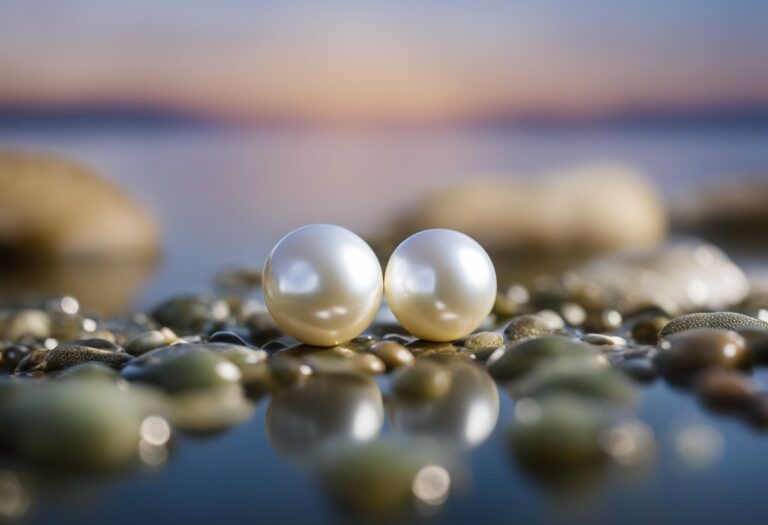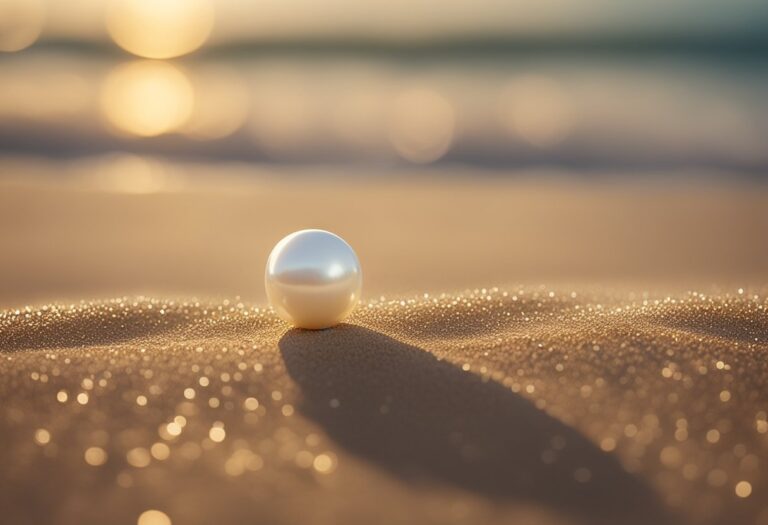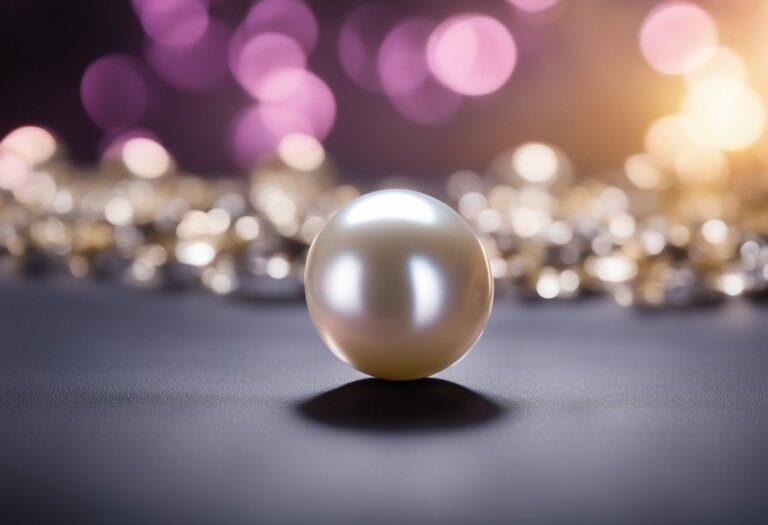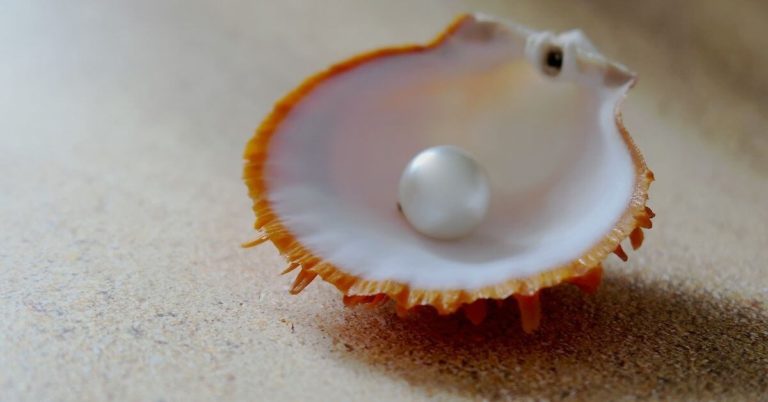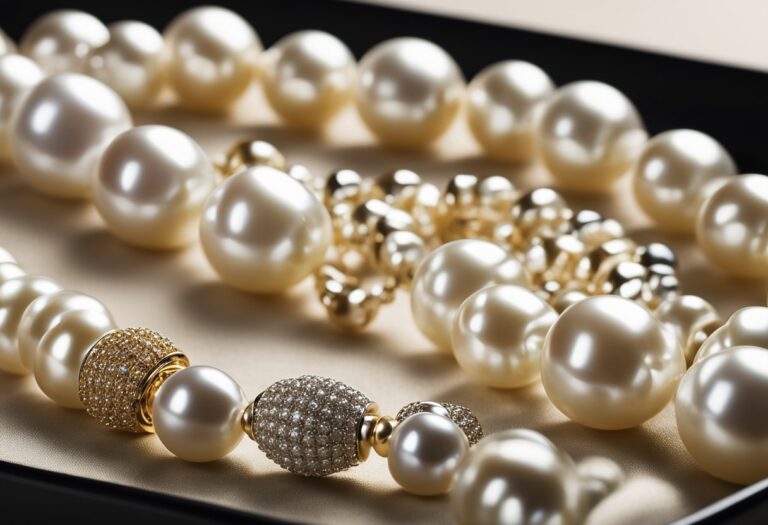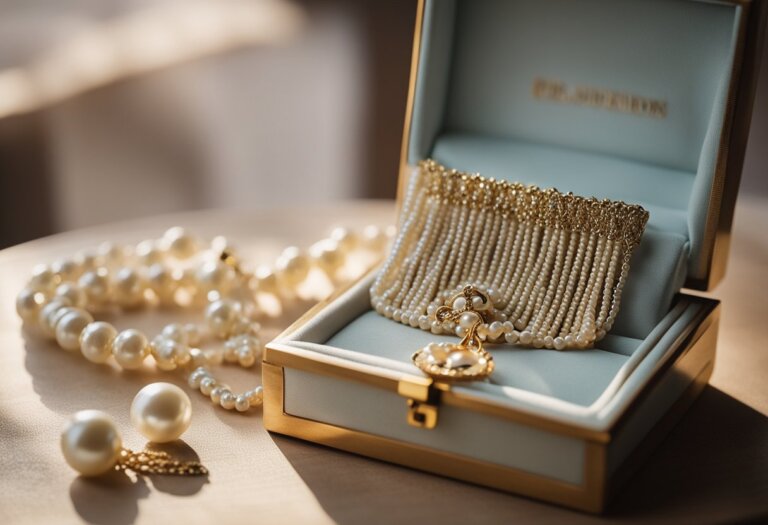South Sea Pearls: A Comprehensive Guide
South Sea pearls are highly valued in the jewelry market for their impressive size and lustrous sheen. Sourced primarily from the waters of Australia, Indonesia, and the Philippines, they rank among the largest pearls available.
Their size, coupled with a unique nacre composition, imparts a rich, deep luster that is sought after by collectors and connoisseurs alike.

Investing in South Sea pearls can be a significant financial decision due to their rarity and value.
When selecting these pearls, factors such as size, shape, color, luster, and surface quality play crucial roles in determining their worth. As part of your jewelry collection, these pearls not only add elegance but also hold the potential to appreciate over time.
Understanding the quality factors that impact the value of South Sea pearls is essential before making a purchase. The market assesses these gems according to strict standards, ensuring that each genuine South Sea pearl represents a sound investment for enthusiasts around the world.
Origins and Types of South Sea Pearls
South Sea pearls are treasured for their size and luster. Your understanding of these gems begins with their origins and varieties.
Geographic Distribution
Australia, the Philippines, and Indonesia are key locations for South Sea pearl cultivation. These regions host the warm, clean waters that are crucial for the growth of the Pinctada maxima, also known as the silver or gold-lipped pearl oyster. These mollusks are responsible for producing the largest and rarest pearls in the world.
Types of South Sea Pearls
South Sea pearls are generally categorized by their color and luster. Central to this category are three distinct types:
- Gold South Sea pearls: They range in color from light champagne to a deep gold. These pearls are primarily cultivated in the Philippines.
- White South Sea pearls: Known for their elegant and classic look, white pearls often come from Australia and have a soft, silky luster.
- Black South Sea pearls: Although not as common as the other two, they have a unique, dark hue that sets them apart. Often these are associated with the pillowcase oyster, more widely found in the waters of Indonesia.
Physical and Aesthetic Characteristics

South Sea Pearls are renowned for their exceptional quality and unique beauty. Each pearl possesses distinct physical and aesthetic traits that contribute to its desirability.
Color and Luster
Your South Sea Pearl could exhibit a variety of colors, from classic white to silver, and even golden hues. The luster, or shine, of these pearls is a direct reflection of light on their surface, a testament to their value. Superior pearls have a high luster, giving them a mirror-like quality that seems to glow from within.
Shape and Size
The shapes of South Sea Pearls range from perfectly round to baroque, an irregular form. Round pearls are the most sought after and are quite rare. In terms of size, South Sea Pearls are typically large, often starting at 10mm in diameter and can grow much larger, which adds to their allure.
Nacre and Surface Quality
Nacre quality influences both the luster and durability of South Sea Pearls. Thick nacre results in a better luster and increased resilience. The surface quality is crucial; the fewer blemishes or irregularities on the surface of your pearl, the more valuable it is deemed to be.
Cultivation and Harvesting Practices
The meticulous process of cultivating South Sea pearls involves careful oyster selection and sustainable farming practices to ensure the production of high-quality pearls.

Pearl Farming
You must understand that the basis of South Sea pearl cultivation rests on the Pinctada maxima oyster. These oysters are farmed in pristine marine environments which are crucial for their growth and health. Farmed pearl oysters flourish in areas with clear waters and natural algae, which serve as their primary food source. Strong ocean currents are also beneficial as they bring a constant flow of nutrients and help maintain a clean habitat.
Nucleation and Growth
The nucleation process is a delicate technique performed by skilled technicians. They introduce a small bead and a piece of donor mantle tissue into the oyster. This stimulates the production of nacre, which over time forms the cultured pearl. Optimal environmental conditions are paramount during the pearl’s growth, which can take up to several years. Warm temperatures and plankton-rich waters play vital roles in the development of a lustrous pearl within each Pinctada maxima oyster.
Harvesting and Processing
When the time comes for harvesting, your patience rewards you with the Pinctada maxima yielding South Sea pearls known for their size and luster. Post-harvest, pearls undergo cleaning, sorting, and often, treatment to enhance their colors and shine. The finest quality pearls are then selected for jewelry, while others may be re-nucleated to produce another pearl within the same oyster. This practice maximizes the output of each farmed oyster while being respectful of the marine environment.
Evaluating Quality and Value
When considering South Sea pearls, understand that their quality and value are influenced by stringent grading standards and several market factors.

Grading and Rarity
South Sea pearls are often appraised using the A-D Grading or AAA Grading system . AAA denotes the highest quality: pearls with exceptional luster, smoothness, and roundness. The rarity of these pearls escalates their worth, making them the Rolls Royce of pearls. Your chances of coming across such perfection are slim, as pristine South Sea pearls are a scarcity.
Price Factors and Investment
As you evaluate South Sea pearls as an investment, consider that their prices hinge on several value factors. Size and color play key roles in determining cost; larger sizes and unique colors command higher prices. Quality is a critical component, with impeccable surface and luster attributing to a pearl’s luxury status. While expensive, these pearls can be a sound addition to your investment portfolio given their enduring demand. Be mindful of your budget but remember, investing in higher-quality pearls might provide greater long-term satisfaction and potential value retention.

